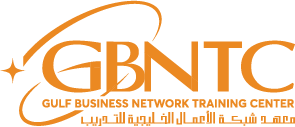In modern construction projects, effective project coordination has become essential for ensuring timely and cost-efficient results. Utilizing sophisticated tools for visualizing intricate systems plays a pivotal role in minimizing misunderstandings and streamlining collaboration among various stakeholders.
One significant advantage of employing advanced 3D modeling is the ability to create a highly detailed representation of environmental control setups. This innovative approach helps in identifying potential clashes during the early stages of planning, thus avoiding costly delays.
Design visualization not only enhances the comprehension of complex systems but also facilitates informed decision-making. By presenting a realistic portrayal of the installation, teams are better equipped to consider various design alternatives and optimize construction planning.
Optimizing Ductwork Layout with Models
Effective arrangement of duct systems is crucial for ensuring optimal airflow and energy efficiency in any building project. Utilizing advanced applications for these models can significantly enhance planning and implementation processes.
- Design Visualization: Creating a detailed representation of ductwork enables stakeholders to visualize spatial relationships, which aids in identifying potential conflicts early.
- Construction Planning: Integrating duct designs into project timelines allows for better resource allocation, ensuring that installation proceeds seamlessly without delays.
- Project Coordination: Enhanced collaboration between engineers, architects, and contractors minimizes misunderstandings and errors, leading to a more streamlined construction phase.
By leveraging modern applications for these models, teams can efficiently tackle the complexities of ductwork layout, leading to improved performance of climate control systems. These advancements also contribute to more sustainable building practices, a critical consideration in today’s construction industry.
For additional insights and practical applications, visit https://mdairheatingandcooling.com.
Integrating Energy Analysis Tools in BIM for HVAC Systems
Incorporating energy analysis tools into building information modeling significantly enhances the efficiency of climate control systems. By utilizing advanced simulation software, professionals can assess performance metrics such as energy consumption and operational costs in real-time. This integration allows for better decision-making during the initial stages of project coordination, ensuring that optimizations are identified before construction begins.
3D modeling capabilities facilitate an in-depth view of the system’s components, allowing engineers to visualize design options and assess their impact on overall energy efficiency. Accurate representation of systems within digital environments not only aids in identifying potential conflicts early in the process but also enhances communication among stakeholders. Effective collaboration fosters an environment where adjustments can be made swiftly, minimizing delays and resource waste.
Moreover, aligning energy analysis tools with construction documents promotes holistic design visualization. This comprehensive approach ensures that all elements of the mechanical systems are considered, paving the way for innovative solutions to reduce energy use while maintaining optimal comfort levels. The ability to compare multiple design scenarios based on performance data further empowers engineers to create sustainable environments that meet current regulations and standards.
Streamlining Collaboration Among Stakeholders Through BIM
Effective collaboration among various project stakeholders is essential for the success of construction projects. Utilizing advanced computer modeling allows for enhanced design visualization, enabling all parties, including engineers, architects, and contractors, to share insights and work towards common goals. The integration of 3D modeling techniques facilitates a unified platform for stakeholders, ensuring everyone is on the same page throughout the project’s lifecycle.
One of the significant advantages of employing this approach is the improvement in construction planning. With all contributions represented in a single cohesive model, it becomes easier to identify potential clashes and discrepancies before they manifest into costly on-site problems. This proactive strategy not only saves time but also optimizes resources and fosters a smoother workflow across different teams.
Moreover, various bim applications can enhance communication channels, allowing stakeholders to interact in real-time. Having immediate access to the same model promotes transparency and accountability, as participants can quickly address queries or suggest modifications. This collaborative mindset ultimately leads to more innovative solutions and a higher quality of work, contributing to the overall success of construction projects.
Improving Maintenance Strategies with BIM-Enabled Documentation
Utilizing advanced digital modeling applications enhances the efficiency of maintenance strategies in building systems. By providing comprehensive documentation, these modern tools allow facility managers to access critical information seamlessly. Detailed 3D representations of mechanical systems facilitate better understanding and troubleshooting, ultimately reducing downtime during service interventions.
Accurate information regarding equipment specifications, installation procedures, and service histories can be readily available through integrated project documentation. This ensures that maintenance teams have the necessary resources to effectively manage ongoing operations. Precise data improves planning and execution, enabling proactive rather than reactive maintenance approaches.
Moreover, construction planning benefits from the visual clarity offered by three-dimensional modeling. Stakeholders can visualize the spatial relationships between various systems, making it easier to identify potential issues that may arise during maintenance activities. This foresight is crucial in preventing disruptions and enhancing the overall reliability of building operations.
Effective project coordination is paramount in maintaining operational efficiency. With interconnected models, all team members can access up-to-date information, ensuring everyone is on the same page. This collaborative environment fosters smoother communication and quicker resolutions to any issues that may surface.



Comments are closed